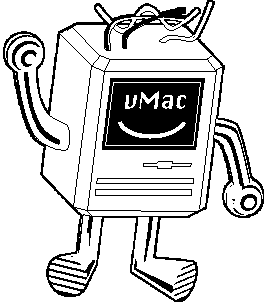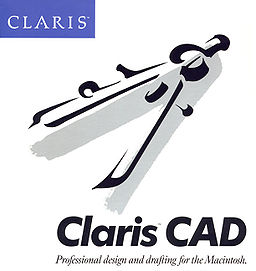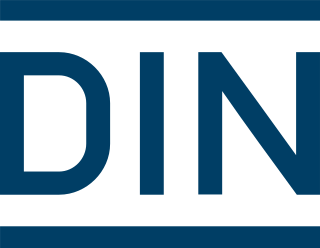
AutoCAD is a commercial computer-aided design (CAD) and drafting software application. Developed and marketed by Autodesk, AutoCAD was first released in December 1989 as a desktop app running on microcomputers with internal graphics controllers. Before AutoCAD was introduced, most commercial CAD programs ran on mainframe computers or minicomputers, with each CAD operator (user) working at a separate graphics terminal. Since 2010, AutoCAD was released as a mobile- and web app as well, marketed as AutoCAD 360.

HyperCard is a software application and development kit for Apple Macintosh and Apple IIGS computers. It is among the first successful hypermedia systems predating the World Wide Web.

The TeachText application is a simple text editor made by Apple Computer and included with System 7.1 and earlier. It was created by Apple programmer Bryan Stearns with later versions created by Stearns and Francis Stanbach. TeachText was one of the only applications included with System 7, leading to its frequent role as the application to open "ReadMe" files. It was named "TeachText" as a nod to this role in tutorials and other introductory materials.

MacPaint is a raster graphics editor developed by Apple Computer and released with the original Macintosh personal computer on January 24, 1984. It was sold separately for US$195 with its word processor counterpart, MacWrite. MacPaint was notable because it could generate graphics that could be used by other applications. Using the mouse, and the clipboard and QuickDraw picture language, pictures could be cut from MacPaint and pasted into MacWrite documents.
MacWrite is a WYSIWYG word processor application released along with the first Apple Macintosh systems in 1984. Together with MacPaint, it was one of the two original "killer applications" that propelled the adoption and popularity of the GUI in general, and the Mac in particular.

AppleWorks is an integrated office suite developed by Rupert Lissner for Apple Computer, originally for the Apple II platform, and released in 1984. The program contains a word processor, database, and spreadsheet.

System 7 is a graphical user interface-based operating system for Macintosh computers and is part of the classic Mac OS series of operating systems. It was introduced on May 13, 1991, by Apple Computer, Inc. It succeeded System 6, and was the main Macintosh operating system until it was succeeded by Mac OS 8 in 1997. Features added with the System 7 release included virtual memory, personal file sharing, QuickTime, QuickDraw 3D, and an improved user interface.
Digital painting is an emerging art form in which traditional painting techniques such as watercolor, oils, impasto, etc. are applied using digital tools by means of a computer, a graphics tablet and stylus, and software. Traditional painting is painting with a physical medium as opposed to a more modern style like digital. Digital painting differs from other forms of digital art, particularly computer-generated art, in that it does not involve the computer rendering from a model. The artist uses painting techniques to create the digital painting directly on the computer. All digital painting programs try to mimic the use of physical media through various brushes and paint effects. Included in many programs are brushes that are digitally styled to represent the traditional style like oils, acrylics, pastels, charcoal, pen and even media such as airbrushing. There are also certain effects unique to each type of digital paint which portray the realistic effects of say watercolor on a digital 'watercolor' painting. In most digital painting programs, the users can create their own brush style using a combination of texture and shape. This ability is very important in bridging the gap between traditional and digital painting.

vMac was an open source emulator for Mac OS on Windows, DOS, OS/2, NeXTSTEP, Linux-Unix, and other platforms. Although vMac has been abandoned, Mini vMac, an improved spinoff of vMac, is currently developed. vMac and Mini vMac emulate a Macintosh Plus and can run Apple Macintosh System versions 1.1 to 7.5.5. vMac and Mini vMac support CPU emulation from Motorola 68000 to 68040, display output, sound, floppy disk insert, HFV image files, and more. Some vMac ports include extra features such as CD-ROM support, basic serial port (SCC) support, Gemulator ROM board support, and various performance improvements. Although the website is still in operation, most vMac development slowed to a halt in 1999, and no official releases have been made since. Many of the developer e-mail addresses listed on the website are not currently working.

MacProject was a project management and scheduling business application released along with the first Apple Macintosh systems in 1984. MacProject was one of the first major business tools for the Macintosh which enabled users to calculate the "critical path" to completion and estimate costs in money and time. If a project deadline was missed or if available resources changed, MacProject recalculated everything automatically.

MacTerminal was the first telecommunications and terminal emulation application software program available for the classic Mac OS. MacTerminal enabled users to connect via modem or serial port to bulletin board systems and online services, and to other computers. MacTerminal was capable of emulating the DEC VT100 and other computer terminals.
PowerCADD is a computer-aided design and drafting (CADD) software program for the Apple Macintosh platform developed from out of the PowerDraw platform of the mid-1980s by Greensboro, North Carolina-based Engineered Software.
TranslateCAD is a tool for computer-aided translation software designed to extract translatable text from CAD drawings saved in the industry-standard DXF format - regardless of the CAD software used to create such drawings - so that professional translators are able to translate in plain text using a number of CAT tools available.
Alibre Design is a parametric computer-aided design (CAD) software suite developed by Alibre for Microsoft Windows. Alibre is a brand of Alibre, LLC, a company based out of Texas.

SolveSpace is a free (libre) and open-source 2D and 3D CAD program. It is a constraint-based parametric modeler with simple mechanical simulation capabilities. Version 2.1 onward runs on Windows, Linux and macOS. It is developed by Jonathan Westhues and a community of volunteers.

Classic Mac OS refers to the series of operating systems developed for the Macintosh family of personal computers by Apple Inc. from 1984 to 2001, starting with System 1 and ending with Mac OS 9. The Macintosh operating system is credited with having popularized the graphical user interface concept. It was included with every Macintosh that was sold during the era in which it was developed, and many updates to the system software were done in conjunction with the introduction of new Macintosh systems.

ABViewer is multifunctional software for working with AutoCAD DWG, DXF, PLT, STEP, IGES, STL and other 2D and 3D CAD files. The application allows creating and editing drawings as well as saving them to AutoCAD DWG/DXF, PDF, JPG and a number of other vector and raster file formats.




















